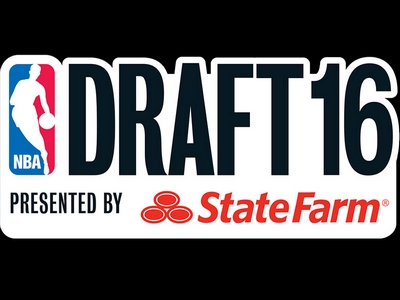Its that time once again, our favorite time of the year of course; ten days before the draft when everything logical in regards to analyzing basketball gets flushed down the toilet. Instead we focus on superficial things that have proven again and again to have very little correlation with actual success in the NBA.
This player is superior to that player because his standing reach is two inches longer. That guy is a better prospect because he bench pressed 185 pounds 19 times instead of the 8 someone else did. Lets just forget irrelevant things like how many points and rebounds a player averaged, what kind of drive he has to improve or how many games he helped his team win, because those obviously have no bearing on a players success.
Who was the top athlete in the 2003 draft? Thinking logically about that draft, youd probably assume it was a toss up between Dwyane Wade and Lebron James. But in fact, it was 6-2 shooting guard Troy Bell, who did not make it past his rookie contract before being cut by the man who reached badly to draft him in Jerry West. Bell was affectionately nicknamed Troy Airbell by ACB Spanish league fans he horrified with the air-balls he jacked up playing for Real Madrid, and has struggled to earn a living playing basketball since. Bell measured a 41 inch vertical leap (which would rank 2nd in this years combine), ran a 3.06 in the ¾ court sprint (would rank 1st), and bench pressed the 185 pound bar 17 times (first amongst guards). If Bell were eligible this year, he most likely again would be deemed the top athlete in this years draft too.
Who was (supposedly) the 2nd best athlete in that draft? Brandon Hunter, an eventual late 2nd round pick who toiled in the CBA this past season before being picked up late in the year by a team in Italy. Dwyane Wade, possibly the best overall athlete in the NBA today, ranked 14th. Chris Bosh finished 51st. Chris Kaman 45th. In that same year, TJ Ford measured in as being slower in the various footspeed tests than Chris Kaman, Kirk Penney and Carmelo Anthony. Huh? Anyone that has ever seen him play would tell you that he is one of the fastest players in the NBA, if not the fastest.
In 2004, we found a similar story. Kirk Snyder came out as the top overall athlete, while players like Andre Iguodala, Luol Deng and Al Jeffersons draft stock supposedly took a hit by measuring out as relatively poor athletes. That same Andre Iguodala who was robbed of the slam dunk championship a few months ago, only recorded a 34 inch vertical leap, one inch more than J.J. Redick this year. Rickey Paulding, Timmy Bowers and Luis Flores were all declared amongst the top 10 athletes in the draft. One struggled to average double figures this past season in France, one starred in the Israeli league, and another is currently playing in the Dominican Republic.
The 2005 draft combine was equally as pointless. Monta Ellis ranked as the worst athlete of all the players measured, coming out slow, weak and with very little leaping ability. Once the NBA season started and the ball actually rolled out on the court, though, he magically transformed into a spectacular athlete who can get his shot at will and dunks anything and everything that is remotely close to the basket, despite only being 6-3. Eventual rookie of the year Chris Paul was declared only the 15th best athlete amongst the players tested, and was somehow deemed slower than Deron Williams, Sean May and Wayne Simien. The athletic tests also led you to believe that Andrew Bogut was some kind of stiff who would never be able to keep up with the speed of the NBA--that is, until the players actually started playing basketball and we found out that he is actually a fine athlete for a player his size.
This year, we again find some head-scratching results that make us question the validity of the NBA draft combine, and even make us wonder why exactly its even held. At the top of the list is Marcus Williams, who is, according to the combine results, one of the most unathletic guards to ever be considered a top 10 pick. Were talking about a player that played in the best conference in America and got into the lane and created offense for his team almost whenever he pleased against the top defensive guards the NCAA has to offer. All it takes is five minutes watching him on tape or in person to realize that, but the results of the combine would never tell you that. Shawne Williams is supposedly better jumping straight off the ground with no initial step than he is with a running approach, which is somewhat of an odd concept in itself. Patrick OBryant, who we watched twice over the past few weeks put on an incredible show of leaping ability and explosiveness, measured out as being slow, stiff and with very little leaping ability. When we last saw him, he was doing 360 Statue of Liberty dunks from a step inside the free throw line, but now all of a sudden he cant jump? We could go on and on and on.
The combine results are hardly the Holy Grail in the evaluation process as far as NBA decision makers are concerned from what we are told, but people who did not pay much attention to how players performed during the season seem to place a much larger emphasis on them then they probably should. As one NBA scout told us today its not really something we take into our war room and make decisions off of. Its more something to glance at and use as another small part of the complicated puzzle that ends up telling you what wed hope is the entire picture.
The main point we are trying to hammer across here is that there are major concerns about whether or not the tests that are being done on the players at the pre-draft camp are actually transferable to a real basketball setting. The overwhelming amount of possessions in the NBA are played in a half-court set, which means that there really isnt any valid measurement tool that is being utilized right now to properly evaluate how well a player will actually be able to create a scoring opportunity for himself or his teammate, how well hell be able to react defensively on the perimeter or whether or not a player will go out of his area to track down a rebound.
Measuring how fast a player gets from the free throw three quarters down the court to the basket is a tool that is very much non-transferable to an actual game setting. Evaluating lane agility speed only tells a small part of how well players are able to actually stay in front of someone on the perimeter. Assessing a players height, standing reach or vertical leap tells very little about how likely a player is to box out his man, anticipate where the ball will come off the rim and have the desire and tenacity to go get it.
There is more to slashing to the basket than just having an incredibly explosive first step to help a player get by his man. Players like Dwyane Wade and Chris Paul use a wide variety of hesitation moves and quick changes of direction to first get their man off balance and then blow them once they are on their heels. Knowing how and when to slow down and then speed up, change gears and use crafty ball-handling skills simultaneously is what will eventually decide whether or not a player will be successful in creating space to operate.
Once they get to the basket, having a 40+ inch vertical leap isnt enough to actually put the ball in the hoop either. Theyll need to rely on their instincts, feel, touch, and body control to compliment their leaping ability and either get to the free throw line or finish the play.
Things like timing and instincts are what make the great athletes truly great basketball players, which is why indicating that one player is somehow superior because he has better pure physical attributes seems like a complete waste of time and money.
In the much more scripted and mechanical NFL this may be a valid way to draw some noteworthy conclusions, but the results of the past few combines show that this isnt the case are far as basketball goes. Some players are naturally incredible athletes, but only a handful of them actually know how to take fully advantage of their athleticism and translate it out on the court. Too many of them are spending their valuable time and resources on testing out well in the outdated evaluations that the NBA looks at during the combine, rather than working on actually becoming better basketball players in their rookie season.
The fact that the NBA has decided not to conduct a psychological test at the pre-draft camp to evaluate some key intangibles is a bit surprising. Being able to bench press a 185 pound bar 25 times is not going to make the difference in whether or not a player is able to come down with a rebound or come up with a loose ball, but hustle, timing, fundamentals, instincts, footwork, reflexes, tenacity and anticipation skills are. Having a tool at the NBAs disposal to measure things like work ethic, motivation, leadership skills, coachability, decision making on and off the court, ability to fit in with a team structure, pressure situations and temptation, and other quote unquote intangibles would be a much more effective way to properly evaluate a players likelihood to succeed in the NBA. If the league is unable to put the top players in a competitive situation where their true basketball ability can really come out, their time and money might be better spent looking at other aspects of a players overall makeup to complete the entire picture.















































Comments